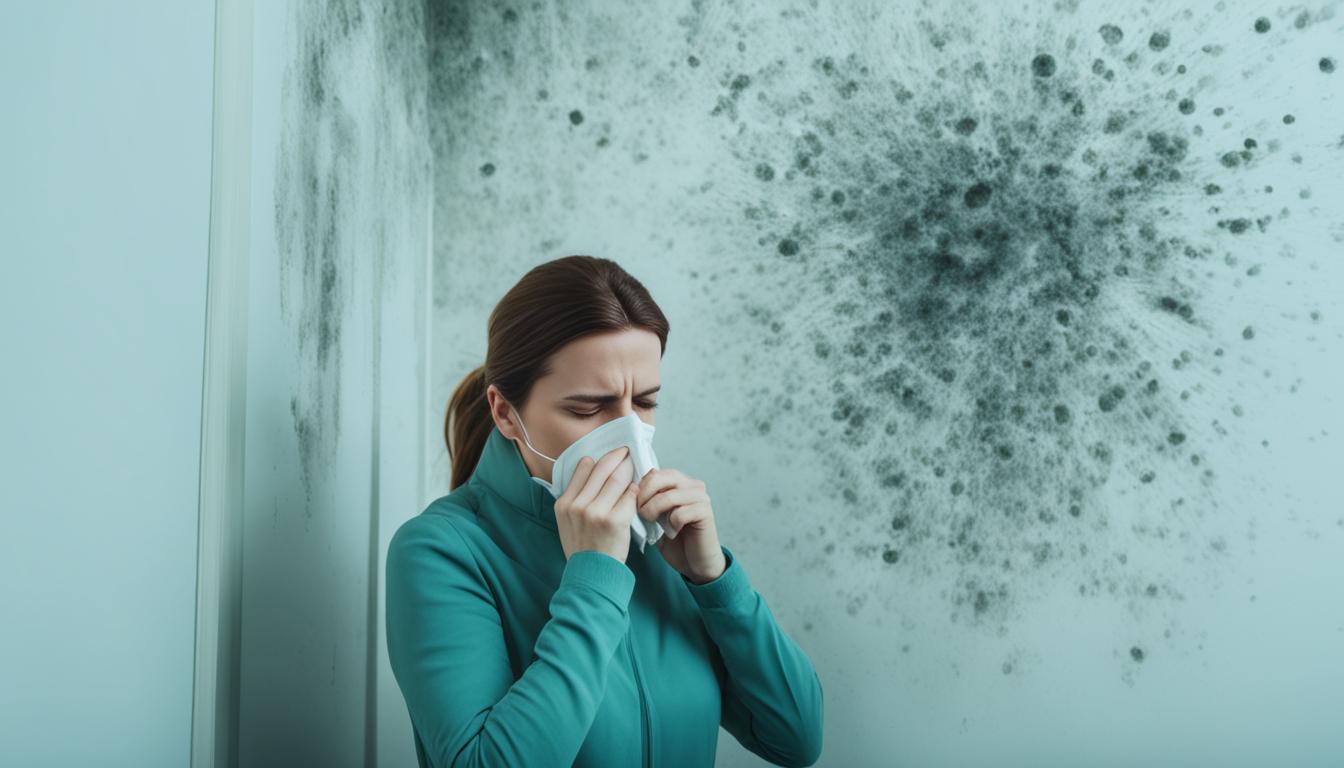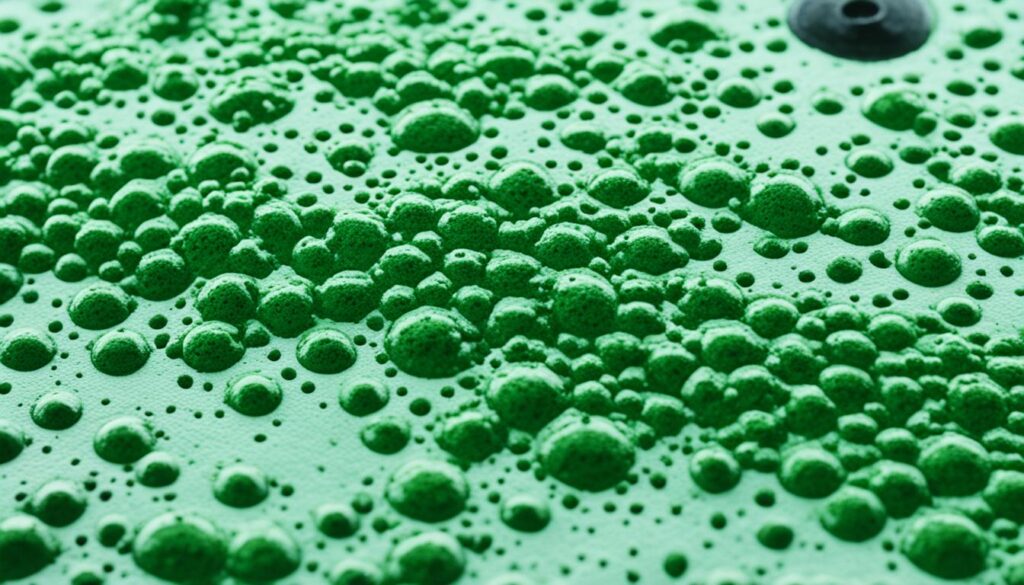
Symptoms of Mold Exposure in Miami – Health Risks
Mold exposure is a serious concern for residents in Miami, especially due to the city’s humid climate. Mold thrives in moist environments, making Miami an ideal breeding ground. It’s important to understand the symptoms of mold exposure as it can have detrimental effects on your health. By recognizing these symptoms early on, you can take necessary precautions and seek professional help to protect yourself and your loved ones.
Mold exposure can lead to various health risks, ranging from mild to severe. The symptoms can manifest in different ways and affect different parts of the body. It’s crucial to be aware of these signs so that you can accurately identify if mold exposure is to blame for your health issues.
Key Takeaways:
- Mold exposure is a significant concern in Miami’s humid climate.
- Recognizing the symptoms of mold exposure is crucial for early detection and prevention.
- Mold exposure can lead to a range of health risks.
- Being aware of the common symptoms can help identify mold exposure as the cause of health issues.
- Seeking professional help from experts like Fix Mold Miami is essential for assessment and remediation.
Understanding Mold Exposure

Before delving into the symptoms, it is important to understand what mold exposure entails. In Miami’s humid climate, mold thrives and can pose significant health hazards. By understanding the fundamentals of mold exposure, you can better protect yourself and your loved ones.
Mold is a type of fungus that reproduces through tiny spores that float in the air. When these spores land on a damp surface, mold can grow rapidly, releasing more spores into the environment. This makes Miami’s warm and moist climate an ideal breeding ground for mold.
Exposure to mold can lead to a range of health issues, particularly for individuals with allergies or weakened immune systems. The spores released by mold can trigger allergic reactions, causing symptoms such as sneezing, coughing, watery eyes, and a runny nose. In more severe cases, mold exposure can lead to respiratory problems, skin irritations, and even infections.
“Mold exposure can have detrimental effects on your health, and it’s crucial to address the issue proactively. By understanding the underlying causes and potential health risks associated with mold, you can take the necessary steps to ensure a safe living environment.”
Let’s take a closer look at the various health hazards that mold exposure can pose:
Allergic Reactions:
- Nasal congestion
- Sneezing
- Coughing
- Itchy or watery eyes
- Runny nose
- Skin irritation
Respiratory Problems:
- Shortness of breath
- Wheezing
- Chest tightness
- Coughing fits
- Asthma attacks
It is important to note that individuals may experience symptoms differently, and the severity of the symptoms can vary based on personal health conditions and the level of exposure to mold. If you suspect mold exposure in your home or workplace, it is crucial to consult with a professional mold specialist for a thorough assessment and remediation.
| Health Hazard | Symptoms |
|---|---|
| Allergic Reactions | Nasal congestion, sneezing, coughing, itchy or watery eyes, runny nose, skin irritation |
| Respiratory Problems | Shortness of breath, wheezing, chest tightness, coughing fits, asthma attacks |
| Infections | Fever, pneumonia, sinusitis, bronchitis |
| Neurological Symptoms | Headaches, dizziness, difficulty concentrating, memory problems |
Common Symptoms of Mold Exposure
Exposure to mold can have various effects on the human body. The symptoms of mold exposure can manifest in different ways, affecting different parts of the body. It is crucial to be aware of these signs to determine if mold exposure is the cause of your health issues.
Here are some of the most common symptoms associated with mold exposure:
- Allergic reactions: Some individuals may experience allergic reactions when exposed to mold. This can include symptoms such as sneezing, coughing, itching, and watery eyes.
- Respiratory problems: Mold spores can irritate the respiratory system, leading to respiratory problems. This can include difficulty breathing, wheezing, chest tightness, and coughing.
- Skin irritation: Direct contact with mold or mold-infested materials can cause skin irritation, such as a rash or hives.
- Headaches: Mold exposure has been linked to frequent headaches and migraines.
- Fatigue: Mold can release toxins known as mycotoxins, which can cause fatigue and general feelings of malaise.
- Nasal congestion: Mold spores can irritate the nasal passages, leading to nasal congestion and sinus problems.
If you notice any of these symptoms and suspect mold exposure, it is important to take action promptly. Ignoring the signs can worsen your health condition and lead to long-term complications.
“It is crucial to be aware of the symptoms associated with mold exposure. Early recognition can help prevent further health issues and promote a healthier living environment.” – Dr. Emily Thompson, Allergy Specialist
Remember, mold exposure can affect individuals differently, and these symptoms may vary in severity. If you are concerned about mold exposure or experiencing persistent symptoms, it is advisable to consult a healthcare professional for proper diagnosis and appropriate treatment.

Seeking Professional Help and Prevention
When it comes to dealing with mold exposure, seeking professional assistance is crucial. Fix Mold Miami is the go-to specialist in Miami, Florida, renowned for their expertise in mold assessments, prevention, and remediation. Their team of highly trained professionals can identify the source of mold, assess the extent of the problem, and provide effective solutions tailored to your specific needs.
By enlisting the services of Fix Mold Miami, you can trust that your mold issues will be handled with utmost care and precision. They utilize advanced techniques and equipment to ensure thorough mold removal, creating a safe and healthy environment for you and your family.
In addition to professional help, taking proactive measures to prevent mold growth is essential. Fix Mold Miami can provide you with valuable tips and strategies for minimizing the risks associated with mold. From controlling humidity levels to improving ventilation, their experts can guide you in implementing preventive measures that will help keep mold at bay.




